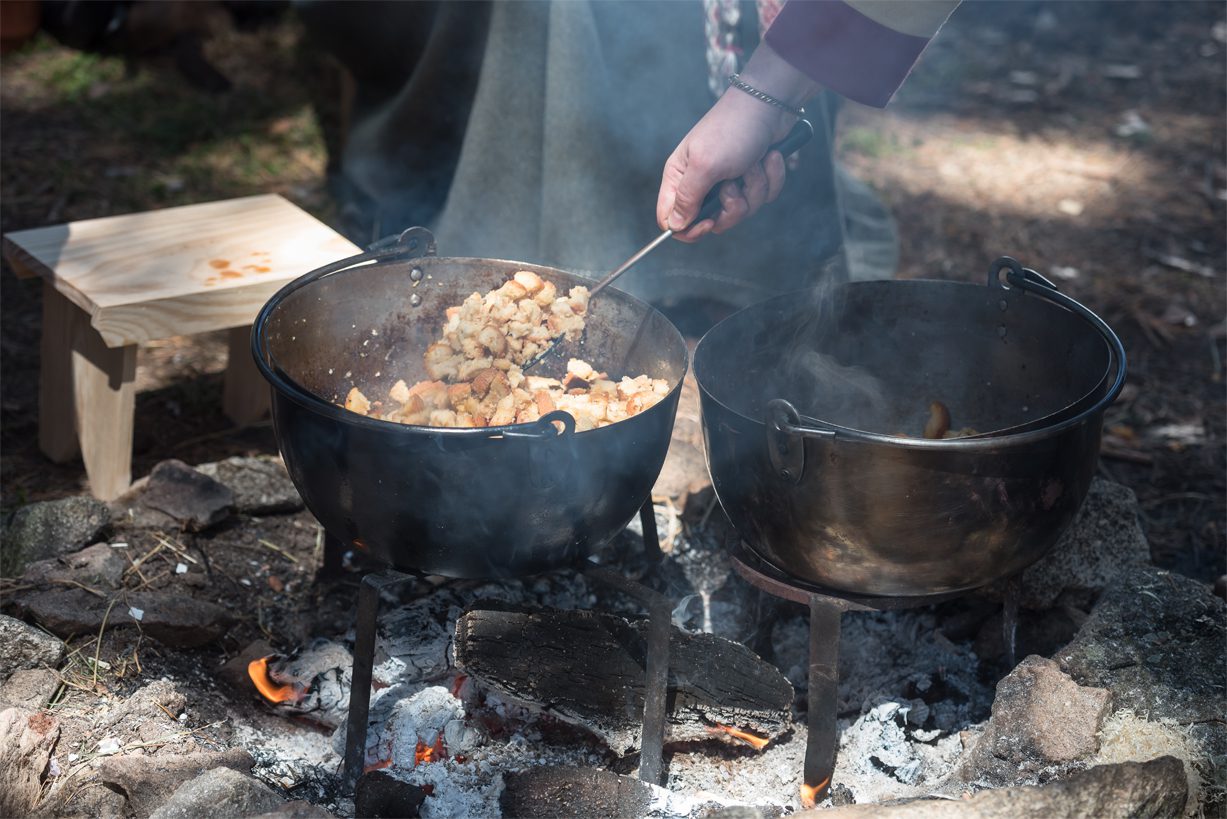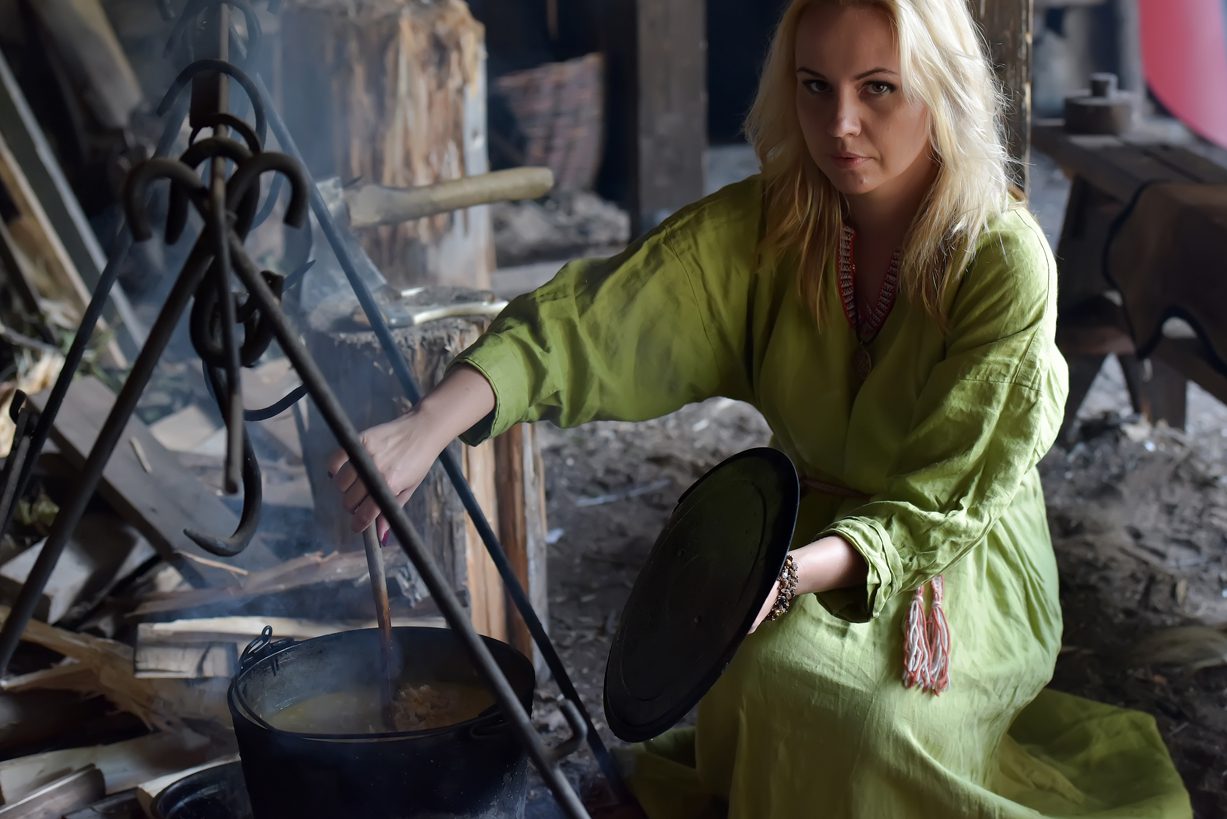The Vikings, or Norsemen were a seafaring people originally from Scandinavia (present-day Denmark, Norway and Sweden), who from the late 8th to the 11th century AD, raided, traded and settled throughout parts of Europe, in a period that became known as the Viking Age.
Commonly depicted as being fearless, brutal warriors, Vikings were also accomplished farmers, and fishermen. They grew all types of grains, including wheat, oats, barley and rye, and tended to orchards to provide fresh apples, plums and cherries.
In the family social structure, the man generally worked the farm and fished during the day, while the woman cared for the household, children and animals, and delt with most other aspects of domestic home life.
Mealtime was usually twice a day, the first being in the morning (dagmal) and when the day’s work was done (nattmal). Existing as an agricultural society, the typical Viking diet was well rounded and included an abundance of meat, vegetables, fruits and grains. Reindeer, goat, elk, mutton, poultry and fowl were readily available, but beef, lamb and pork were the preferred choice in a Viking household.

The meat was mostly boiled into thick stews with vegetables, salt and seasonings, and served with un-yeasted bread. Most meals were cooked over a hearth in the centre of the main living area of individual homes, where they made hearty meals for sustaining hard labour.
An abundance of food meant that they were able to add additional interest and flavour to their meals. A variety of herbs and spices, including coriander and cumin were often added, along with butter that was made by shaking small covered earthenware containers of cream into a soft spread. The resulting buttermilk was also consumed as a drink or used for making cheese. Vegetables, spices or other ingredients that were not able to be foraged, hunted or grown, could be traded for or bought at local markets.
Another popular dairy product, skyr, comparable to modern yogurt, was produced by splitting the milk into two parts, liquid whey and the thicker skyr (similar to Greek-style yogurt). It had a natural sweetness and was often consumed as is or was mixed with porridge or other flavour enhancers.
Fish was also a staple of the seafaring Norsemen and made up around 25% of their diet. Herring and cod were abundant and were widely consumed, while Eels and trout were fished out of Europe’s freshwater lakes using fish nets or barbed hooks. All fish was either smoked, pickled or salt-dried, kept for long journeys or to sustain a household during the harsh winters.
For a sweet ending to their hearty meal, the Vikings enjoyed snacking on dried fruits served with honey. Honey was also fermented into a strong mead using wild yeast, raw honey and various flavourings such as elderberries, cherries, rose hips, crab-apples, cardamon and pepper.
Written by Julie St Jean





